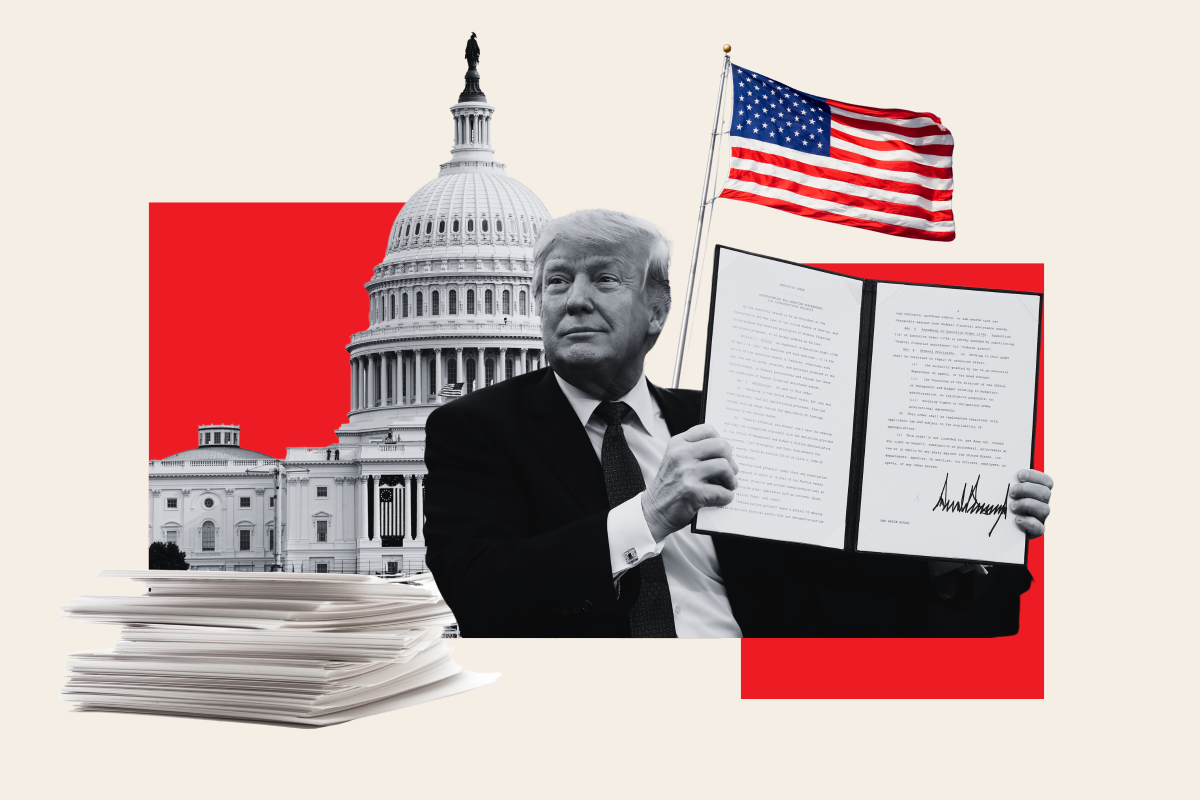Trump's Executive Order: Impact On Prescription Drug Costs

Table of Contents
The Executive Order's Key Provisions
Trump's executive order sought to address high prescription drug prices through a multi-pronged approach, focusing on increased price transparency, fostering competition, and cracking down on what it deemed price gouging by pharmaceutical companies. Several key provisions were central to this strategy:
- International Price Negotiations: The order aimed to allow the government to negotiate drug prices with pharmaceutical companies, mirroring practices in other developed countries. This was a significant departure from previous policy, where direct price negotiations were largely prohibited.
- Reforms to the 340B Drug Pricing Program: This program provides discounts to hospitals serving low-income patients. The executive order sought to reform the program to ensure that discounts were actually passed on to patients, preventing potential exploitation.
- Changes to Drug Importation Rules: The order explored the possibility of allowing the importation of lower-cost drugs from other countries, potentially increasing competition and driving down prices.
- Transparency Requirements for Drug Manufacturers: Increased transparency was a central theme, requiring drug companies to publicly disclose their pricing and manufacturing costs. This was intended to expose potential price gouging and encourage more competitive pricing strategies.
Impact on Drug Manufacturers
The executive order’s impact on pharmaceutical companies was significant and multifaceted. The potential for government price negotiations directly threatened their profit margins.
- Potential Revenue Loss Due to Price Negotiations: The prospect of the government directly negotiating prices created substantial uncertainty for drug manufacturers, potentially leading to significant revenue losses.
- Increased Regulatory Scrutiny and Potential Fines: The increased transparency requirements and stricter enforcement of existing regulations resulted in heightened regulatory scrutiny and the potential for hefty fines for non-compliance.
- Changes to R&D Investment Decisions: Uncertainty surrounding future pricing policies could have influenced pharmaceutical companies' decisions regarding research and development (R&D) investment. Reduced profitability might have led to decreased investment in new drug development.
- Shift in Business Models: Facing potential price controls and increased regulatory pressure, pharmaceutical companies may have been forced to adjust their business models, potentially impacting their long-term strategies and innovation.
Impact on Consumers
Assessing the actual impact of Trump's executive order on consumer prescription drug costs is complex. While some positive changes were observed, it's difficult to definitively attribute them solely to the order.
- Changes in Drug Affordability: While some studies indicated modest decreases in certain drug prices, the overall impact on patient out-of-pocket costs remains debated. Comprehensive data demonstrating significant, widespread price reductions is lacking.
- Increased Access to Medications: The evidence regarding improved access to medications is inconclusive, with no substantial evidence indicating widespread improvements.
- Impact on Insurance Premiums: The order's effects on insurance premiums are unclear and would require further investigation to determine any significant changes.
- Availability of Specific Drugs: There's no clear evidence indicating widespread shortages or increased supply of specific medications directly linked to the executive order.
Legal Challenges and Political Backlash
Trump's executive order faced significant legal and political challenges. Pharmaceutical companies and industry lobbyists actively opposed several provisions.
- Specific Lawsuits Filed and Their Outcomes: Various lawsuits challenged different aspects of the order, particularly those related to price negotiations and drug importation. The outcomes of these lawsuits varied, with some provisions facing legal setbacks.
- Congressional Actions Related to the Executive Order: Congress also weighed in, with debates and legislative actions reflecting the political polarization surrounding the issue.
- Public Opinion on the Order's Effectiveness: Public opinion on the executive order's effectiveness was divided, reflecting the broader political divide on healthcare policy.
- Lobbying Efforts by Pharmaceutical Companies: Pharmaceutical companies and their lobbying groups actively fought against aspects of the executive order, contributing significantly to the political and legal challenges it faced.
Conclusion
Trump's Executive Order on prescription drug prices represented a significant attempt to address the high cost of medications in the US. While the order aimed to increase price transparency, promote competition, and negotiate lower prices, its overall impact on consumer costs remains a subject of ongoing debate. The order faced considerable legal challenges and political opposition, and while some modest price reductions were observed in certain instances, a comprehensive and conclusive assessment of its success in achieving its stated goals is lacking. Understanding the lasting implications of Trump's Executive Order on prescription drug pricing remains crucial for informed healthcare advocacy. Further research into subsequent legislation and policy changes affecting prescription drug costs is needed to fully comprehend the long-term consequences of this initiative.

Featured Posts
-
 Espns Nba Draft Lottery Coverage Overhaul A Detailed Look
May 13, 2025
Espns Nba Draft Lottery Coverage Overhaul A Detailed Look
May 13, 2025 -
 Pretstavuvanje Na Prvata Kniga So Romski Ba Ki
May 13, 2025
Pretstavuvanje Na Prvata Kniga So Romski Ba Ki
May 13, 2025 -
 Elsbeth Season 2 Episode 15 A Critical Analysis Of A Fallen Episode
May 13, 2025
Elsbeth Season 2 Episode 15 A Critical Analysis Of A Fallen Episode
May 13, 2025 -
 The Countrys Business Landscape Mapping Growth And Opportunity
May 13, 2025
The Countrys Business Landscape Mapping Growth And Opportunity
May 13, 2025 -
 Paso Robles Under Heat Advisory High Temperatures And Safety Precautions
May 13, 2025
Paso Robles Under Heat Advisory High Temperatures And Safety Precautions
May 13, 2025
